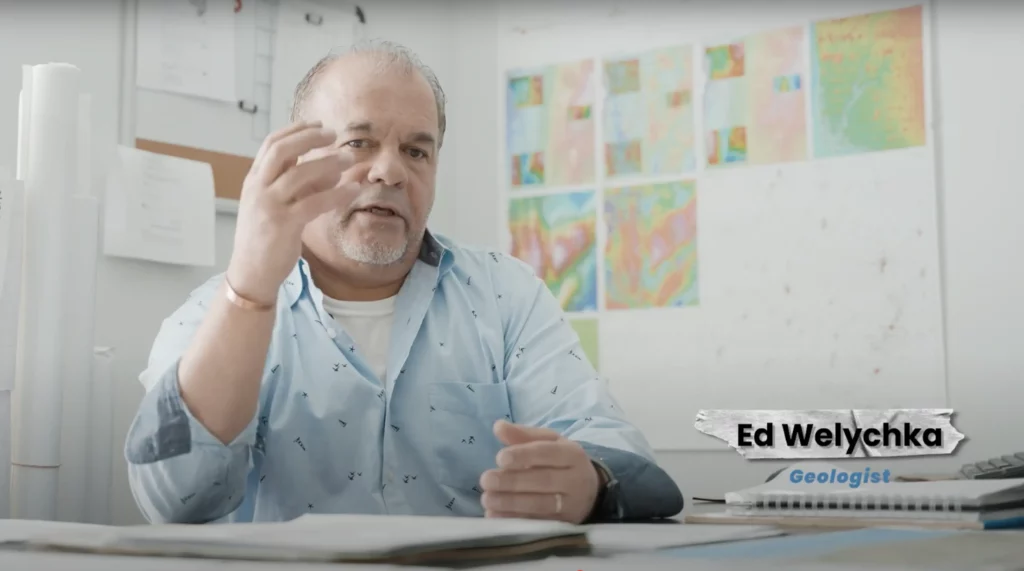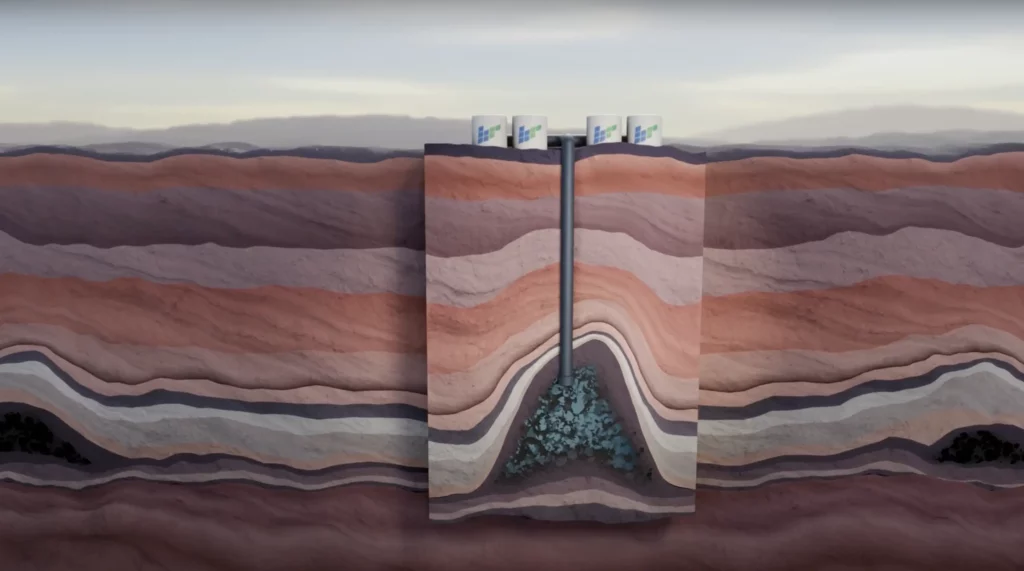A Quick Overview of the Geology and Technology behind Bedrock’s CAES.
(Video & Transcript)
VIDEO TRANSCRIPT:
00:00:00
Narrator:
After increasing energy demands and high energy prices collide as our planet grapples with the effects of climate change. Meanwhile, the transition to a clean energy future is both slow and inconsistent. What if we could change this? Ontario’s unique geology and geography offer a sound solution to provide scale and implement CAES: Compressed Air Energy Storage, making variable energy sources like wind and solar viable by reducing the potential energy loss associated with intermittent supply.
00:00:31
Zain Javed:
Over the course of years, there [have] been various occasions that Ontario has produced excess of energy that we have had to either waste or sell across the border.
00:00:40
Narrator:
We know that Compressed Air Energy Storage works, but why does it work? What makes Ontario unique? And how do we know that Compressed Air Energy Storage is safe, reliable and able to meet the challenges of Ontario’s energy future?
00:00:54
Zain Javed:
Well Bayfield and Stanley, they both have the combined capacity [to] store enough energy to power 624,000 homes, which is more than the total number of homes in London and Hamilton combined.

00:01:04
Jim Mcintosh:
These two reefs happened to be so far away from the natural gas pipeline grid that they were never developed for gas storage. The pressure limitations of the pool, how fast you can put air or natural gas into and out of the pools, all that stuff is all understood. So it’s not like we’re developing new technology. We’re just using an existing natural asset for a different purpose.

00:01:33
Narrator:
Let’s travel back in time and deep below the earth’s surface. Our story starts 400 million years ago, when the earth was one giant supercontinent: Pangea. Most of the world was vast ocean. One-hundred million years later, dinosaurs would inhabit enormous jungles and grasslands. Over eons of time, low lying areas were flooded by rivers, creating massive swamp forests. Silt gradually built up into natural levees to form lakes. When forested areas became dry enough to be set on fire by lightning, the resulting forest fires left behind charcoal: the fossilized carbon components of coal. Mass extinction events produced more organic matter, which furthered this process.
As oceans flooded areas, they created more wetlands with low water levels sitting above the topsoil. When marine life in the water died and piled pinnacle reefs formed within carbonate banks on adjacent slopes. This is how reservoirs were created. During the last Ice Age, four kilometers of solid ice sat atop a kilometer of soil, rock, and anhydrite salt caps. As the combined weight of all these layers bore down on the guelph, they created a durable and impermeable sealing layer. Still, the reservoirs remained perfectly intact.
00:02:50
Ed Welychyka:
What we do is we we test the cap rock. We core the rock and we prove to ourselves, and we prove to the energy board, that that rock has a frack gradient. In other words, nothing can break that rock until a certain pressure. And that pressure doesn’t break down until it’s multiplied from the original pressure.

00:03:14
Narrator:
The porous rock reservoirs in Bayfield and Stanley are nearly twice the size of Niagara Falls and are found 1500 feet underground. Each reservoir formed eons ago, and is made of all kinds of organic matter, including coral, and other marine life. Their decomposition formed pockets of pressurized natural gas within the porous rock, which remained trapped for over 400 million years. Even following their discovery, there has been no disruption to the structural stability of these naturally occurring pressurized vaults.
In the 1950s, natural gas was safely extracted from these underground reservoirs. Based on our measurements, we know that these unique chambers can easily store up to 1200 psi, with absolutely no risk to the structural integrity of the surface or the reservoir. Today, these 330 foot geological structures sit empty, and we are ready to use them to store pressurized air and provide safe, reliable and clean energy to the Ontario grid.
Now let’s have a look at where we’ve come from and where we’re going. The beauty of Bedrock’s project is that it is a reworking of old ideas functioning in concert and collaboration with nature to contribute to a responsible transition towards a renewable energy mix. Protecting our environment while simultaneously meeting growing energy demands is not only a good idea, it is part of an attainable progression in Ontario’s energy future. The solution has been right under our feet all along. It is in the sun that shines, the water we drink, and the air we breathe. The future is greener, cleaner and closer than you think. With Bedrock, Compressed Air Energy Storage.








